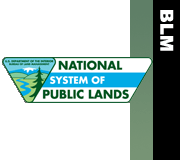|
Print Page | ||
| Range | |||
|
The Kremmling Field Office administers approximately 385,675 acres of BLM public land in North Park, Middle Park and the Laramie River Basin. There are 145 permittees that graze livestock on 243 BLM livestock grazing allotments with 36,901 AUMs of authorized livestock grazing preference. Currently, the Kremmling Field Office almost exclusively issues permits for cattle grazing , while in the past a combination of cattle and sheep grazing was prevalent. The KFO manages these rangelands to meet the needs of the local ranchers who depend on their BLM grazing permits to sustain their ranching operations and the general public as part of the multiple use philosophy. Th KFO is also dedicated to bring all allotments into compliance with the Standards for Public Land Health in Colorado. Rest rotation and deferred rotation grazing systems have been implemented on the livestock grazing allotments wherever practical. Rotation grazing systems have proven beneficial to the range resource and will maintain or improve the condition of the range and allow the native vegetation to continue to dominate the region. Proper livestock grazing management is also a strong deterrent to the establishment or expansion of weeds. Rangeland projects are installed such as spring developments with pipelines and water troughs, sagebrush control to enhance sagebrush steppe vegetation communities to improve habitat for livestock and wildlife, and fences to aid in proper livestock distribution where appropriate. The KFO has an established range monitoring program to ensure livestock grazing is compatible with the vegetation and long term rangeland health. Utilization monitoring is used to ensure livestock properly graze a particular allotment or pasture within an allotment. Trend analysis is completed to inform the BLM of the long term trend of the health of the vegetation. If the long term trend is positive, the area should retain its vegetation quality for future generations to enjoy and use. Monitoring is also used following project installation and changes in livestock grazing systems to determine if the changes are producing the expected results. |
|||







